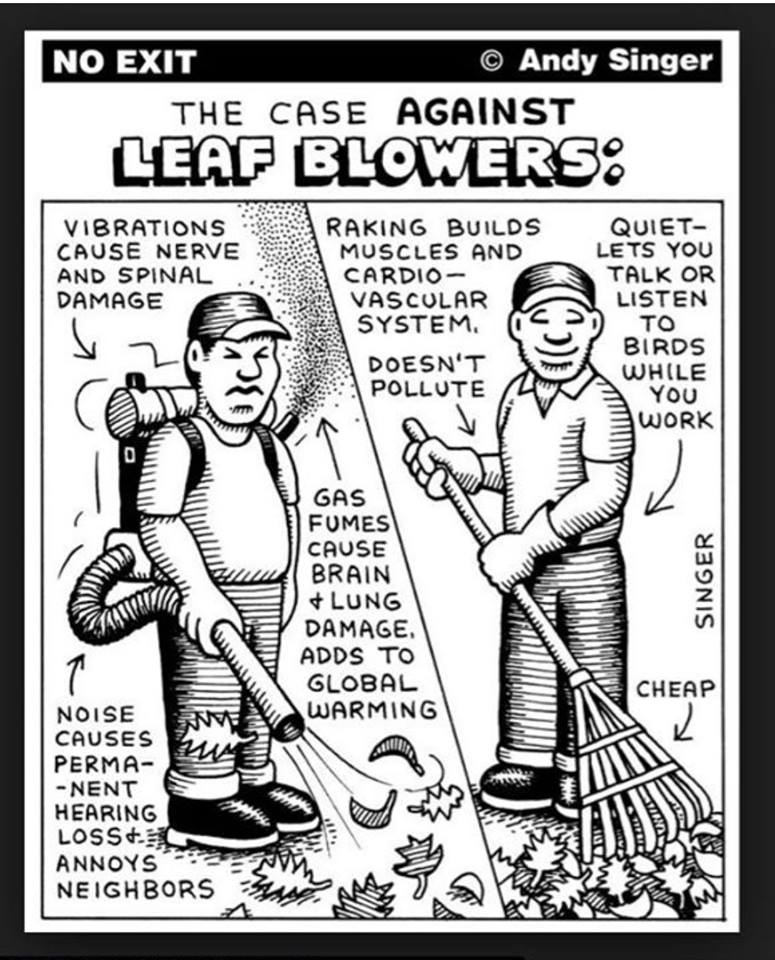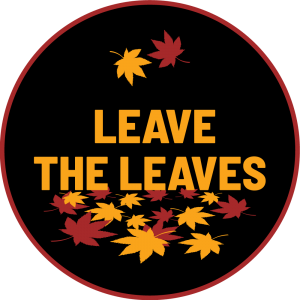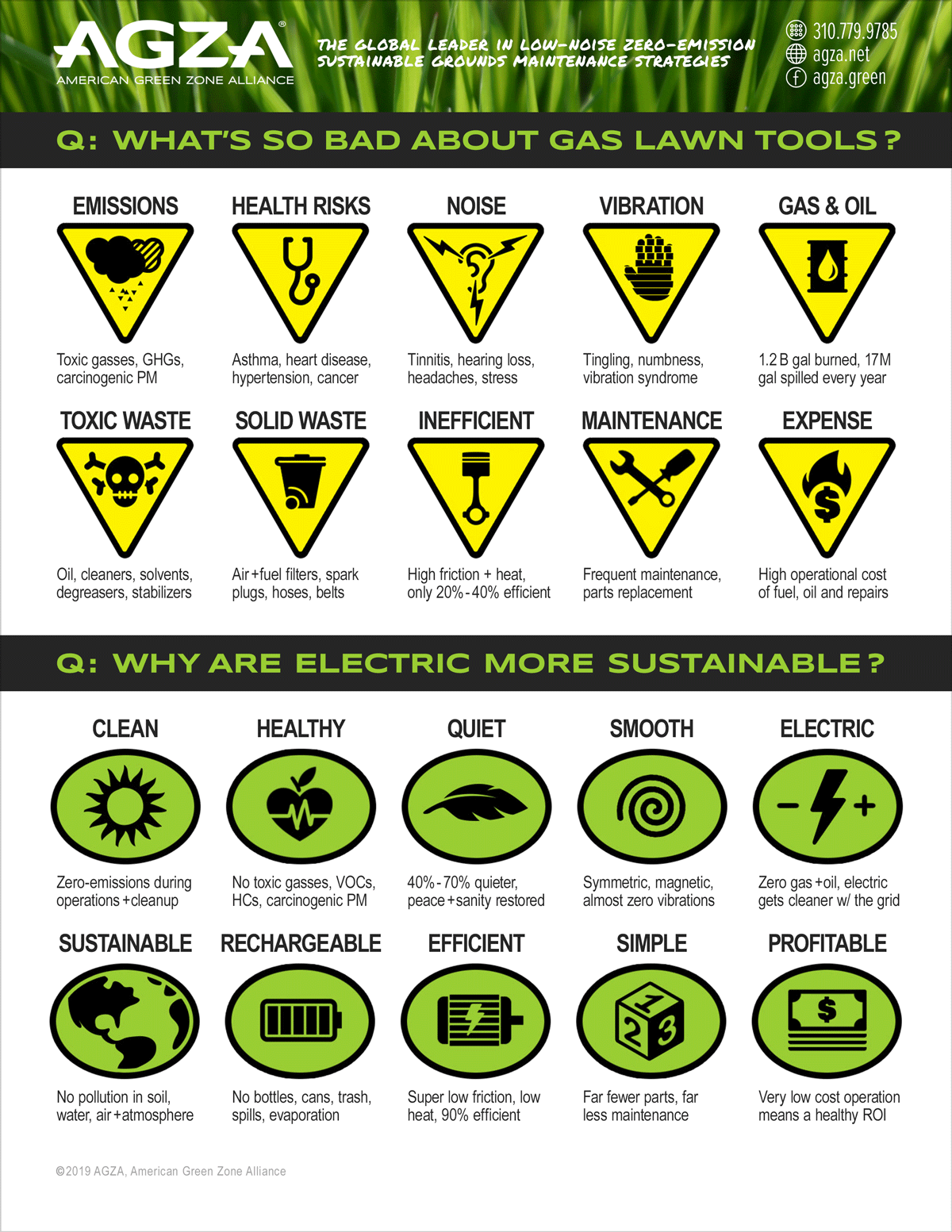Nextdoor.com posts about leaf blowers by Albert Kaufman, Portland, Oregon
Please re-post these as is, credit or not. Thank you – let’s end the noise and air pollution of leaf blowers together.
-
Pets and Leaf Blowers don’t mix: Note from a veterinarian
“In support of local efforts to ban gas leaf blowers and improve the quality of life in Sonoma and drastically reduce unnecessary harmful particulate matter in the air we breathe, I wanted to contribute a few statements and my opinion from the vantage point of a working small animal Veterinarian in Sonoma.It is very well known that particulate matter such as dust, dirt, and debris from the environment can pose a tremendous health challenge for dog, cats, and virtually all other mammals. While the normal changes in seasons, weather, rainfall, and pollen counts can all affect animals, extra particulate matter such as the debris aerosolized by leaf blowers pose a sharply increased risk for a variety of health problems for our domestic species. Among those most notably seen by me directly are:
1. Significant flare up of cough, wheezing, and “respiratory” issues that encompass both infectious and inflammatory types of diseases.
2. Eye problems of unknown origin–either in one or both eyes: owners report a clear discharge from the eyes or a “pink eye” situation with no previous known injury.
3. Nasal discomfort: rubbing and snorting, as if to remove a “foreign body” that is not there, but rather a minute irritant that was substantial enough to bother the mucous membranes and irritate the pet’s nasal passages.
4. Skin issues, including itching and scratching. These clinical signs are usually blamed completely on atopy or “allergy.” There is well documented, long standing scientific evidence that the irritation in the skin is secondary to allergens that the pet has inhaled.
In addition, because pets are so sound sensitive, the use of leaf blowers can startle animals and cause outdoor pets to dart away from yards and potentially scare them into more dangerous situations such as traffic or other precarious situations.
The blasting “on and off” sounds made with leaf blowers has a definite impact on small animals “fight or flight” response, causing an immediate release of cortisol into the bloodstream. Especially with cats, this taxes the body and leads to a surge in blood glucose almost instantly. In my opinion, this is a good example of the loud noise made by leaf blowers having a negative impact on animals all around our town—it is not an obvious impact, but once you realize what is going on inside their bodies on a cellular level, you realize that maybe the impact is farther reaching than we previously realized.
The information and examples I have stated above are only a small sample of the deleterious effects that leaf blowers have on the small animals of Sonoma. I hope that my words will help get some conversations started that emphasize the importance of considering the quality of life for our pets in Sonoma as people make an effort to decide the fate of leaf blowers in our community.
I would be happy to answer any other questions regarding this topic as my time and schedule permit.
Sincerely,
Vallard Forsythe, DVM ~ Broadway Veterinary Hospital
735 Broadway Sonoma, CA 95476
(707) 938-4546
-
More and more brave towns are putting a stop to the tyranny of leaf blowers – Thanks for considering!
Lately I’ve noticed less and less gas-powered leaf blowers being used in our community. Thank you to anyone who has personally made the change or had their landscaping service adjust either to electric blowers or to rakes and brooms. Thank you thank you thank you – the Earth thanks you – your neighbors thank you – the insects thank you. Thank you! https://qz.com/1729584/more-brave-towns-are-putting-a-stop-to-the-tyranny-of-leaf-blowers/ PS – the quietcleanpdx.org group is working on something with the City. I hope to have news about this very soon.
-
The Devil’s Workshop by Kim Stafford, Oregon Poet Laureate, 2018-2020
The Devil’s Workshop by Kim Stafford, Oregon Poet Laureate, 2018-2020 To torture your neighbors, some devil said, I give you my multi-tool that hits so many irritants at once: it deafens workers so their ears ring, it kicks up killing dust to sicken children, it spews more poisons to taint the sky in a mere half hour than a truck driving from the Texas plains to Alaska, and all to hustle leaves from yard to bin. Have you seen one such contraption chase a single leaf to pirouette in the blue plume that’s killing us? Have you gritted your teeth and hated the neighbor you recently enjoyed? Have you missed your meditative hour with rake and rain, as you walked your way from summer into fall? My friend, the bar is low. We can do better. —– Learn more about this issue @ https://quietcleanpdx.org
-
If you’re still not convinced about the danger of leaf-blowers, please watch this video
https://youtu.be/sRsYRen6nVE Join our effort to ban these in Portland @ https://quietcleanpdx.org









